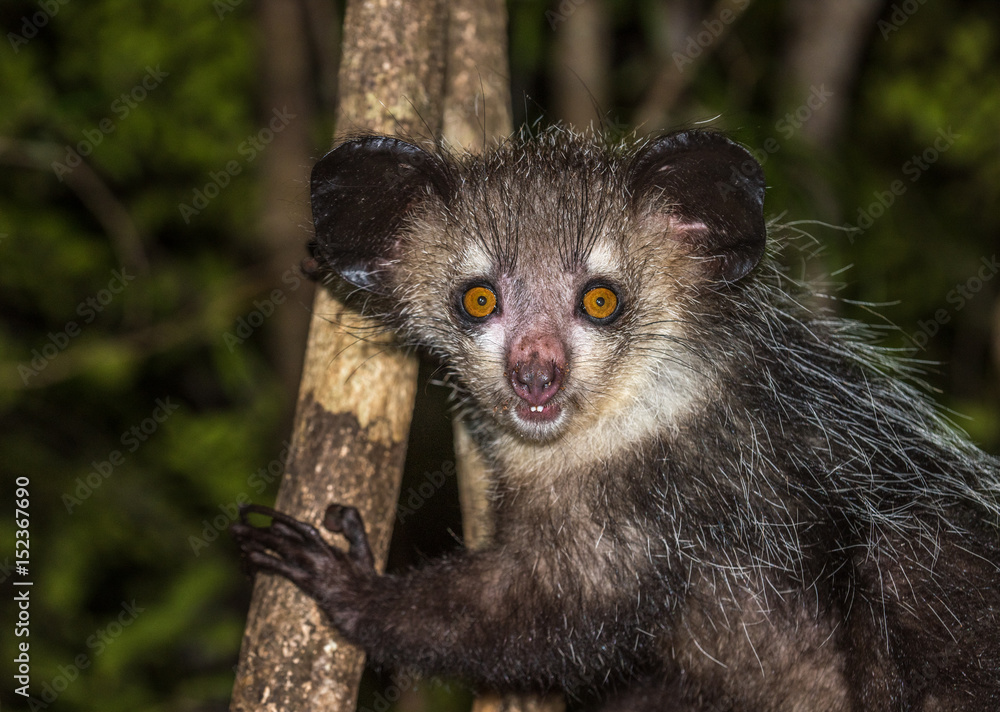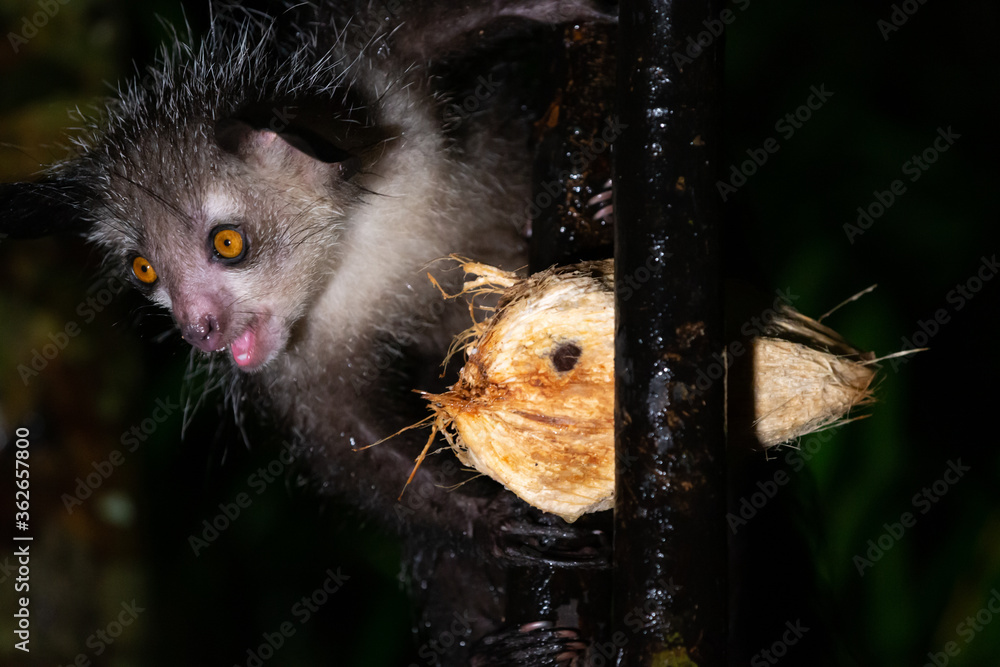The aye-aye (Daubentonia madagascariensis) is a nocturnal arboreal primate endemic to Madagascar, belonging to the family Daubentonidae, of which it is the last representative. This fascinating and mysterious animal is considered one of the world’s strangest primates due to its unique physical characteristics and peculiar behavior. However, its fate has not always been easy. Locals fear it and kill it when they spot it, as it is believed to bring bad luck or even death to those it points its finger at.

Morphology and characteristics of the primate :
The smallest of the lemurs, the aye-aye is strange because of its long, sharp nail designed to catch larvae through tree bark. The aye-aye is a rare species of Madagascan lemur. It was first classified as a rodent and described as having the teeth of a rabbit, the ears of a bat, the bristles of a wild boar, the hands of a monkey, and the tail of a fox, before finally being recognized as one of the planet’s most endangered mammals.
The aye-aye has several distinctive features that make it instantly recognizable:
Size and appearance: It measures around 30 to 40 cm in length (adults), not including a bushy tail that can reach the same length. Its coat is generally dark, ranging from dark brown to black, with lighter hairs in places.
Eyes and ears: Its eyes are large and bulging, adapted to its nocturnal life. Its ears, also large, are extremely sensitive to sound.
Teeth: Similar to rodents, the aye-aye has continuously growing incisors that enable it to pierce wood to access its food.
Middle finger: The most remarkable feature of the aye-aye is its elongated, skeletal middle finger, which it uses to extract insect larvae and other small prey from holes in dead branches. The aye-aye is truly a distinctive animal that can be quite shocking at first sight.

Aye-aye habitat and behavior :
The aye-aye is primarily found in the tropical rainforests of Madagascar, but it can also inhabit areas of secondary forest and plantations. Its natural habitat faces threats from deforestation and forest fragmentation. Additionally, local inhabitants kill the aye-aye due to its appearance, which some believe resembles that of a demon. Efforts have been made to conserve the species by introducing it to Nosy Mangabe Island in Antongil Bay. You can try to spot the aye-aye there, in the Mananara region slightly further south, or near Lake Alaotra within the Palmarium hotel’s private reserve.
The aye-aye is nocturnal, solitary, discreet, and elusive. During the day, it rests in ball-shaped nests constructed from leaves and branches. These nests are spherical with a single entrance, typically high in trees to avoid predators.
Its foraging technique is unique among primates. Using its elongated middle finger, the aye-aye taps tree trunks and branches, listening for echoes to locate cavities containing insects. Once it finds its prey, it uses its powerful incisors to gnaw through wood and its finger to extract larvae.
In addition to insects, the aye-aye also feeds on fruits, nuts, and mushrooms. It uses its unique finger to scoop out fruit flesh. Its diverse diet plays a crucial role in the forest ecosystem by aiding in seed dispersal and regulating insect populations.






